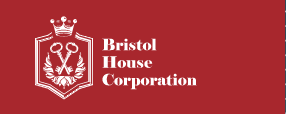When you’re a small business looking for funding, you’ll find one of the first places people recommend you go is the Small Business Administration. The SBA has a variety of loan programs available, and given their consistent support of Main Street, it’s easy to see why you would choose this as a starting point. However, you might be surprised to learn that the SBA doesn’t make direct loans. Instead, it provides loan guarantees to businesses, promising banks to pay back a certain percentage of a loan if the borrower is unable to.Sadly, that’s a clarification often not made. So, if you’re pursuing this as an option, it’s important you learn the truth about SBA loans.
The Most Popular Types of SBA Loans
The SBA offers many different loan programs, unique to small businesses and the varying obstacles they face. They have loans for export assistance, disaster recovery, veteran and military communities, CAPlines (to help with a short-term need), businesses that are working to control pollution, and businesses working in areas affected by NAFTA. Talk about choices! However, three of the most popular SBA loan programs are focused more on generally helping businesses to start and expand.
7(a) Loan: 7(a) loans can help both new and existing small businesses get financing, and is by far the most popular and most used in the SBA loan program. A huge plus about the 7(a) loan is that it can be used for more general purposes, such as working capital, purchasing or renovating land or buildings, equipment, furnishings, debt refinancing, and more.
Microloan: The microloan program offers much smaller loans to help businesses startup and expand. These loans can be used for working capital, supplies, furnishings, inventory, or equipment. The process starts by the SBA making funds available to specific nonprofit organizations with experience in lending and technical assistance. Those organizations, in turn, are then able to make loans up to $50,000.
CDC/504 Loan: For growing businesses, the CDC/504 loan program provides long-term, fixed-rate financing for major assets, such as buildings, land, or long-term machinery.These loans cannot be used for working capital or inventory. The maximum amount of a CDC/504 Loan is $5 million.
Are You Eligible for a SBA Loan?
SBA loan program eligibility varies depending on which program you’d like to pursue, but there are some basic eligibility requirements that apply across the board. First, you must do business in the United States and you must be a for-profit. You must also have a reasonable amount of owner equity to invest and have used alternative resources to finance your business, such as personal assets. If you are uncertain if you qualify, you can learn about eligibility and special considerations here.
Preparing for the SBA Loan Application
When prepping your loan application, contact the lender you are working with to learn about their specific requirements. However, generally speaking, this is what you most likely will be asked to submit:
1. Cover Letter. Be prepared to draft a letter that briefly summarizes the documents to be included in the application. You’ll want to include information on who you are, what your business is, why you need a loan, how much you hope to borrow, and how you plan to repay it.
2. Resumes. Include resumes for owners and senior management.
3. Business Description. Clearly describe what your business does, where you are located, and how long you have been in business. Include important details such as annual sales, number of employees, and any future projections you might have. Describe who your customers, suppliers, and competitors are.
4. SBA Form 4. This form describes how the loan will be used.
5. SBA Form 4-a. This form allows you to list property and other assets to be held as collateral.
6. SBA Form 413. Financial statements for anyone owning more than 20 percent of the business must be included. The statement must list all personal assets, liabilities, and monthly payments. Prepare to also submit federal income tax returns for the past 3 years.
7. Loan Repayment. Quickly state how the loan will be repaid. Be sure to indicate where the money will come from and how long you will need to repay. Budgets, cash flow charts, and other relevant information should be included.
8. Business Financial Statements. Provide complete financial statements for the last three years of business. This includes income statements, balance sheets, and more. Also include the aging of both your accounts payable and accounts receivable. If you are a new business, provide your financial projections, such as a projected income statement and balance sheet.
9. Financial Projections. Put together a “future balance sheet” that shows both the sources and uses of the borrowed funds and current equity. Provide a financial projection, in profit and loss format, for either the next year, or until your business can reach positive cash flow. It’s important to include both earnings and expenses, and to thoroughly explain how you came to these estimated figures.
10. Other Items. As mentioned above, each lender is different. Don’t be surprised if a lender needs a variety of other documents, such as your lease, copies of licenses, letters of reference, partnership agreements, and much more.
Read more: The Truth About SBA Loans







